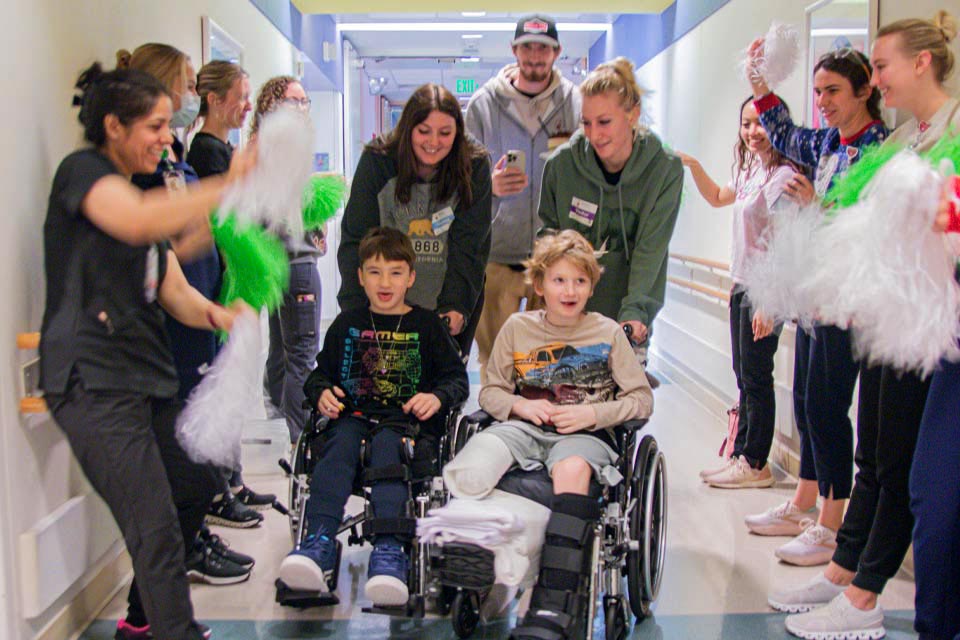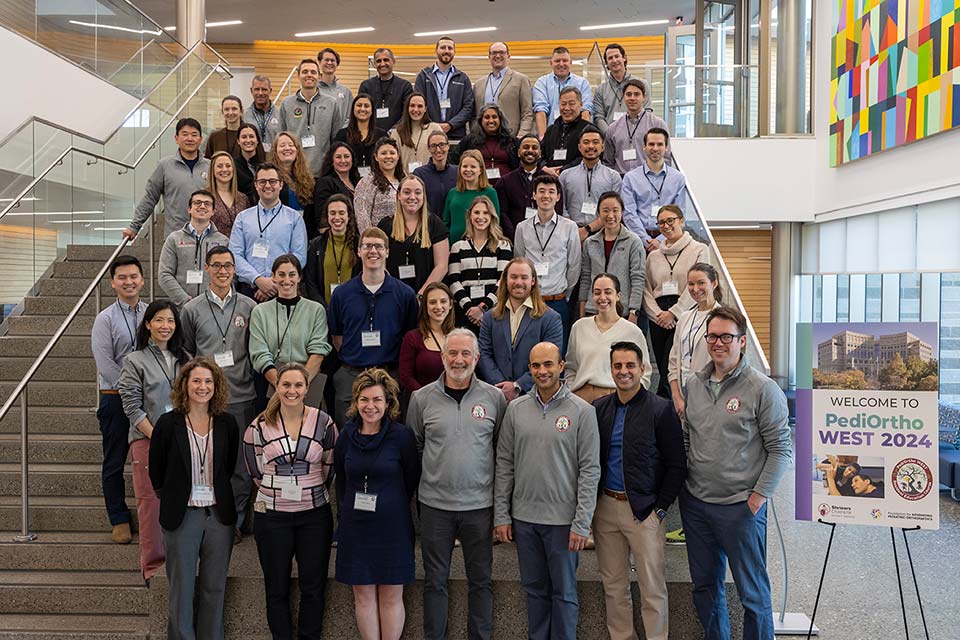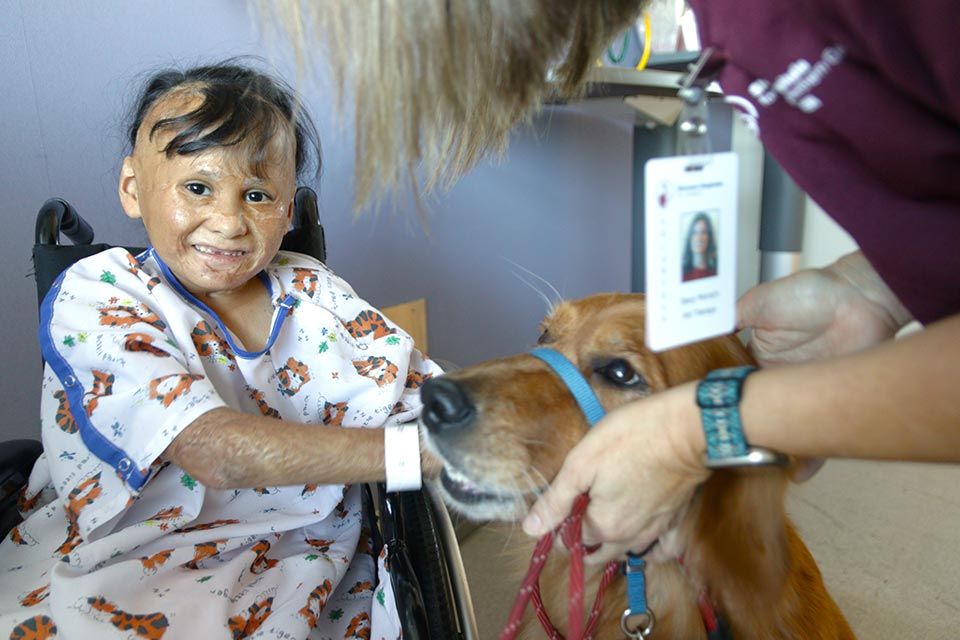Photography and Medical Research Lead to Advances in Cerebral Palsy Care
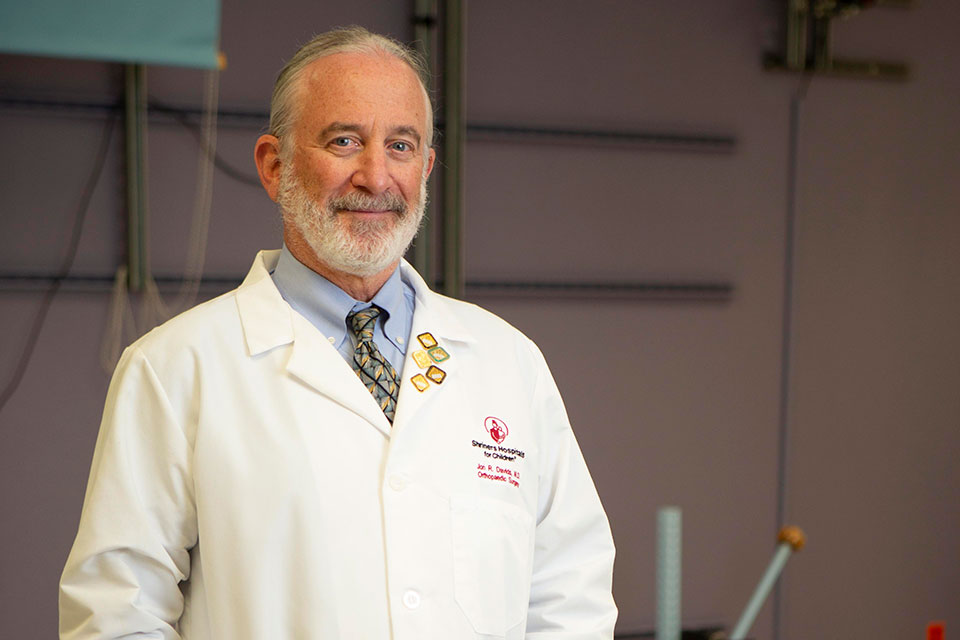
Jon Davids, M.D., in the motion analysis center at Shriners Children's Northern California
Do horses lift all four feet off the ground when they run? Finding the answer to this question led to the technology used today to treat children with cerebral palsy (CP) and other orthopedic conditions.
In the early 1860s, California Governor Leland Stanford wanted to settle a debate about how horses run. Governor Stanford was convinced that horses had all four feet off the ground when they run, but others disagreed. He turned to English photographer Eadweard Muybridge for help. The result was a groundbreaking series of photos that made news around the world and proved Governor Stanford right: Horses did, at times, have all four feet off the ground. The images led to more photographic experiments. Muybridge eventually became the father of motion pictures.
Using Photography to Treat Cerebral Palsy
Over the decades, advances in computer imaging technology have greatly improved motion analysis – the assessment of how a patient moves. Jon Davids, M.D., director of the motion analysis center and assistant chief of orthopedic surgery at Shriners Children’s Northern California, was one of the early pioneers of this technology, becoming a motion analysis research and treatment global leader.
While there are some early photos, taken by Muybridge and others, physicians did not begin measuring and treating CP as a specialized medical field until about 70 years ago. In the 1980s, surgery became more common and patients underwent a series of operations as they grew. In those early years, physicians creating gait labs had to pull together equipment and create their own motion analysis centers to capture images and collect data to publish their work.
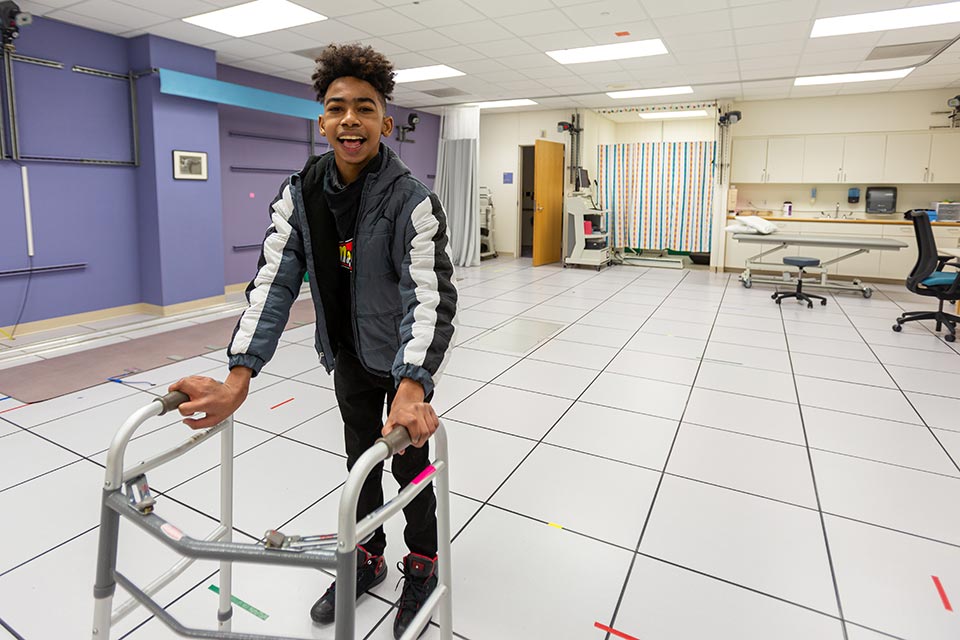
Matteo, a Shriners Children's Northern California patient, at the motion analysis center
Hollywood and Medical Researchers Advance Motion Analysis
As he enters his fourth decade as a surgeon specializing in caring for patients with CP, and also as a neuro-orthopedics innovator, Dr. Davids is inspired by the advances he and his colleagues continue to make.
Shriners Children’s Northern California has one of 14 other motion analysis centers in the Shriners Children's healthcare system using high-level technology, infrared cameras and advanced computer programming to assess patients before and after surgery, to better inform individual patient treatment plans.
It’s a chance for young patients to feel like action figures in a movie. First, markers are attached to their bodies to track their movements, and then they are filmed by infrared cameras as they move and walk. Hollywood uses the same technology to create special effects in films. such as Lord of the Rings, Avatar, Polar Express and the newer Marvel movies.
The Future of Motion Analysis
One day soon, motion analysis may be done at home using smart phones to record a child’s walk.
Dr. Davids and his colleagues are working on computer programs, apps and a website to improve smart phone video, allowing for more sophisticated analysis of those videos in order to generate accurate measurements of how a child is walking. Putting this power in the hands of parents and caregivers means ongoing patient assessment can be done with fewer trips to the hospital.
“The decentralization of sophisticated analysis of movement is happening,” Dr. Davids said. “Not everyone can get to a gait lab, but most everyone has a cell phone and you can make videos of children walking. We are creating a program to manipulate the video to make measurements of the walking. These advances will make life-changing care accessible to many more children, meaning we can help improve many more lives.
“Decentralization of technology can mean you don’t have to come to our center to get the benefit of gait analysis,” Dr. Davids said. “That’s where I’d like to see this go.”
Restez en contact
Abonnez-vous à notre infolettre pour rester informé de tout ce qui se passe dans les Hôpitaux Shriners pour enfants.

